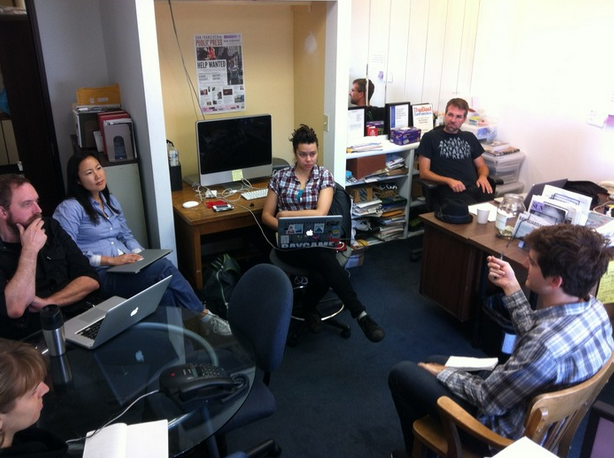
How asking for just $1 can accelerate funding for local nonprofit news
Was it the novelty? Passion for investigative reporting? Unbridled bicycle mania?
It took all three to inspire more than 1,000 people to back the San Francisco Public Press’ Kickstarter campaign for Pedal-Powered News — a quirky but popular initiative to use bicycle delivery to expand distribution of our local nonprofit newspaper to reach more subscribers, retail outlets and community centers throughout San Francisco.
The Public Press has published independent public policy reporting at sfpublicpress.org since 2009 and produces a quarterly ad-free print edition. We always knew we needed to do something inspirational to expand our audience, so we highlighted a key operational need and built an engaging crowdfunding campaign around it.
We raised $21,328 outright — more than double our goal. But it would not have happened without the support of Knight Foundation, which worked in collaboration with the Investigative News Network to offer up to $10,000 in matching funds, based on our ability to recruit 1,000 donors. It was an experiment to see how nonprofit newsrooms could use crowdfunding to bring in new readers and expand their local donations.
When challenged to count progress one backer at a time, we quickly realized that for a local news startup, 1,000 was a really big number. And yet this highly visible 30-day campaign was just what we needed to generate our most successful fundraising effort ever.
Here’s what we learned:
• Crowdfunding is an increasingly effective tool for funding news organizations. We knew the timing was right when Kickstarter announced the rollout of its Journalism category just as we launched, featuring Pedal-Powered News in its “Projects We Love” weekly newsletter.
• Asking for small (“even $1”) donations is disarming. Humbly asking for a pittance motivates people to increase their pledges. Nearly half our 1,016 donors gave $10 or more, and we grew our membership by more than 50 percent in one month.
• A well-coordinated social media campaign can make fundraising go viral. With enthusiastic posting on five sharing platforms, we attracted support from influential Twitter users, including one with more than 1 million followers and the local CBS TV news affiliate, which aired a segment about the campaign’s success.
• Crowdfunding can accelerate toward the end. Campaigns that are close to reaching their goals often see activity surge right before deadline. In the last 48 hours, we attracted 370 backers, with donations coming in every minute. Early donors urged friends to give as the clock ticked down to midnight; we reached our goal at 10:45 p.m.
• Pay attention to branding and consistent messaging. Nearly every day we published additional material that helped build excitement about the history of bikes and newspapers — photos, maps, trivia and interviews, including one with a former San Francisco newsie who sold papers in the 1950s. We created a story around our “shamelessly retro” distribution concept and stuck to it.
• Ask again and again. Many donors said they had intended to give when they first heard about the campaign, and thanked us for reminding them. Best of all, the campaign allowed us to remind onetime donors of the important work that we do and inspire them to renew their support. No one told us that we were posting too many appeals. On the contrary, the team effort on and off social media created a sense that we believed in our own project enough to shout it from the rooftops.
Michael Stoll is the executive director of the San Francisco Public Press. Lila LaHood is the publisher. For additional details on the campaign, view the video and slides from LaHood’s presentation at the 2014 Investigative Reporters and Editors conference in San Francisco.
San Francisco Public Press reporters working in the newsroom.
Recent Content
-
Journalismarticle ·
-
Journalismarticle ·
-
Journalismarticle ·


